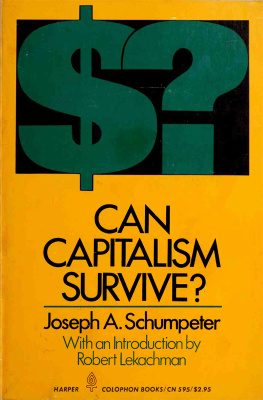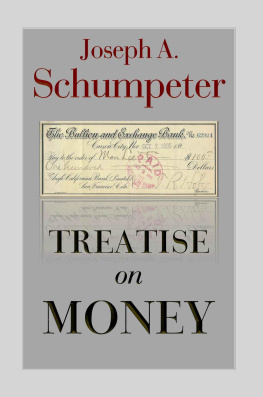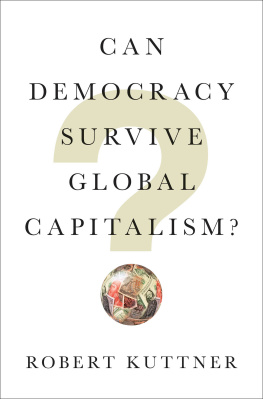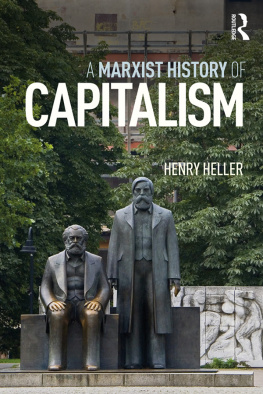This book was originally published as Part II of Capitalism, Socialism and Democracy.
CAN CAPITALISM SURVIVE? Copyright 1942, 1947 by Joseph A. Schumpeter. Copyright 1950 by Harper & Row, Publishers, Inc. Introduction copyright 1978 by Robert Lekachman. All rights reserved. Printed in the United States of America. No part of this book may be used or reproduced in any manner whatsoever without written permission except in the case of brief quotations embodied in critical articles and reviews. For information address Harper & Row, Publishers, Inc., 10 East 53d Street, New York, N.Y. 10022. Published simultaneously in Canada by Fitzhenry & Whiteside Limited, Toronto.
First HARPER COLOPHON edition published 1978
ISBN: 0-06-090595-6
78 79 80 81 82 10 9 8 7 6 5 4 3 2 1
CONTENTS
INTRODUCTION
I F Nobel prizes were awarded posthumously, Joseph Alois Schumpeter, a transplanted Middle European who was born in Triesch, Moravia, and who devoted the last eighteen years of his life to teaching at Harvard, would surely merit the honor, preferably with an oak leaf cluster. More than a generation after his death in 1950, he is universally esteemed as a great economist even by those legions of specialists who have never read a word he wrote. That minority among economists who retain an appropriate respect for the history of their subject still value his first major work, the 1912 The Theory of Economic Development. This brilliant theoretical sketch of capitalist behavior sounded the major theme of its authors lifework, a fascination with economic and social systems. As an economist, Schumpeter no doubt judged as his magnum opus his massive two-volume treatise Business Cycles. Published in 1939, it combined historical illustration, speculative analysis, and statistical evidence, all in the service of comprehending the dynamics of cyclical fluctuations.
A polymath and a linguist, Schumpeter seldom neglected the connections between economic phenomena and the cultural and historical context in which they were embedded. His History of Economic Analysis, prepared for publication after his death by his widow, herself an economist, carefully refrained from exaggerating the significance of the economic strand in human history. Incomplete though it was, the History is a panoramic treatment of the evolution of social thought, to be placed on the same shelf as John Herman Randalls The Making of the Modern Mind. Schumpeter was an unashamed big thinker in a period when most of his colleagues were thinking smaller and smaller thoughts about less and less significant issues.
As a person, Schumpeter was the stuff of legend. He was an enormously popular teacher, at his best with small seminar groups, but apparently incapable of delivering a dull lecture even to masses of auditors. With students and colleagues his relations were warm and his argumentative techniques courtly rather than abrasive. In a moment of impatience with the stately manners of the Austrian Empire, a radical colleague termed him a feudal remnant. His career in fact resembled neither that of an aristocrat nor a sheltered academic. He served briefly after the First World War as Austrian Minister of Finance, subsequently practiced law in Cairo, and then assumed the presidency of an Austrian bank. Its failure was one of a series that culminated in the collapse of the Creditanstalt and the precipitation of the Great Depression.
Schumpeter was a full-blooded celebrant of life. As the possibly apocryphal tale goes, he recalled in his sixties that as a young man he had aspired to be the finest horseman, lover of beautiful women, and economist of his time.
According to one version of the story, he confessed that he had never learned to ride a horse. Oral tradition offers as an alternative punch line his comment that he had achieved two of his youthful objectives. What counts of course is not the literal truth of such illustrative anecdotes but their plausible attachment to a given individual.
Somewhat belatedly the American Economic Association honored him with its presidency. Lesser men (no woman has ever received this professional accolade) were not compelled to wait until their late sixties to be so distinguished. Large-scale theory is an awkward phenomenon for economists. Like Veblen and for somewhat similar reasons, Schumpeter founded no school. The world abounds in Friedmanites and anti-Friedmanites, Keynesians, neo-Keynesians, and anti-Keynesians, and almost as many versions of Marx as there are Marxists to propound them.
Why some prophets do collect disciples and others dont is an entertaining issue of intellectual sociology. In Schumpeters case, nowhere better illustrated than in the core of Capitalism, Socialism and Democracy reprinted here, the explanation that may suffice is simply that his was an act that was extraordinarily difficult to follow. Although Schumpeters intellectual hero was Leon Walras, the great French inventor of general equilibrium theory, his own canvas was far from a set of mathematical equations. Although Schumpeter was a founder of the econometric society, he himself was an indifferent mathematician. Those who appreciate literature can still enjoy much of Schumpeter precisely because his subject was human history and his analysis a blend of economic reasoning, historical analogy, aesthetic appreciation, and perceptions as frequently political and sociological as narrowly technical.
Schumpeter preferred to operate on the scale of the great works of the eighteenth and nineteenth centuriesAdam Smiths The Wealth of Nations, John Stuart Mills Principles of Political Economy, and not least Karl Marxs Capital. The authors of textbooks find it easy enough to simplify and summarize the theory of competitive price. Following Paul Samuelsons example, they have even succeeded in domesticating John Maynard Keynes, by dint of discarding his historical speculations and converting what remained into a simple set of fiscal hydraulics.
Schumpeter resists bowdlerization. The vision is too subtle and the analysis too complex for primer translation. It is convenient here to consider the argument of Can Capitalism Survive? Published in 1940, it appeared at a time when Schumpeters Harvard colleague Alvin Hansen, then a leading American Keynesian, was popularizing a version of Keynes termed secular stagnation. In a famous 1938 address to the American Economic Association. Hansen maintained that capitalism was certain to suffer permanently high unemployment, at least in the absence of government intervention, because investment opportunity, the driving force of capitalist expansion, had drastically diminished. In the American West the geographical frontier had closed. Population growth was slowing. And, for a number of reasons, new inventions and processes were likely to be less important in the future than they had been in the days of capitalist progress.
Schumpeter, a severe critic of Keynesian economics, dismissed this prognosis almost contemptuously. Those who comprehended business cycle history had no reason to be astounded by the economic calamities of the 1930s. According to Schumpeter, the Great Depression was neither more nor less than the trough of one of the majestic, fifty-year cycles in economic activity that marked the economic history of the West from the middle of the eighteenth century onward. Ample precedents existed even for the severity and duration of contemporary depression. If any novelty accompanied this latest episode it was simply the meddling of misguided politicians into natural processes of recovery and the consequent exacerbation and prolongation of the symptoms of economic pathology. For Keynesians, all of this sounded uncomfortably like Herbert Hoover. For the unemployed, it must have been scant consolation to be told that their condition was a part of the natural order.













